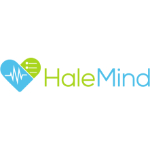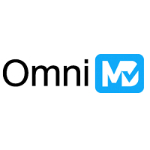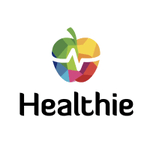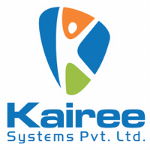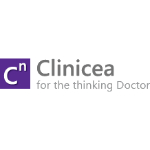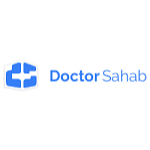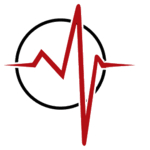List of Best Doctor Software
Showing 10 of 20 productsHalemind, the innovative software designed to enhance your mind and optimize your performance. With its advanced features and user-friendly interface, Halemind is a tool for boosting your cognitive abilities and achieving your goals. Say hello to a s...Read Halemind Reviews
OmniMD is a and innovative healthcare software designed to streamline your practice and enhance patient care. With its user-friendly interface features, OmniMD simplifies tasks, improves efficiency, and maximizes productivity for healthcare providers...Read OmniMD Reviews
Healthie is a wellness platform that offers a seamless, personalized approach to health and wellness for individuals and healthcare professionals alike. Designed to revolutionize the way we prioritize and manage our well-being, Healthie empowers user...Read Healthie Reviews
Nextech is a software revolutionizing the way businesses operate. With its advanced technology and innovative features, Nextech offers companies a seamless is a solution for all their operational needs. From managing projects to tracking inventory, N...Read Nextech Reviews
Smart Clinic is a software that transforms the way healthcare providers manage their practices. With its user-friendly interface features, Smart Clinic streamlines administrative tasks, improves patient communication, and enhances overall patient car...Read Smart Clinic Reviews
Clinicea, a revolutionary software designed to streamline and enhance the management of healthcare practices. With its advanced features and user-friendly interface, Clinicea allows for effortless appointment scheduling, patient record management, an...Read Clinicea Reviews
DoctorSoft is a software designed to streamline and enhance medical practices of all sizes. With its user-friendly interface features, DoctorSoft offers a seamless experience for healthcare professionals, simplifying administrative tasks and allowing...Read DoctorSoft Reviews
Doctor Sahab is a solution to streamline your medical practice. With its innovative features and user-friendly interface, Doctor Sahab simplifies administrative tasks and enhances patient care. Say hello to a hassle-free is a way of managing your cli...Read Doctor Sahab Reviews
MyOPD is a user-friendly, innovative software that has been designed to simplify and streamline the management of medical practices. With its advanced features interface, it allows healthcare professionals to efficiently manage their patient records,...Read MyOPD Reviews
Docta is a Solution for Your Medical Practice Say goodbye to complicated paperwork and inefficient processes with Docta. Our innovative software streamlines every aspect of running a medical practice, allowing you to focus on providing the best care...Read Docta Reviews
- What Is Doctor Software?
- Top Reasons Why Businesses Need Doctor Software?
- What Are the Top Key Features of Doctor Software?
- What Are the Top Benefits of Doctor Software?
- What Are the Steps to Choose the Right Doctor Software?
- What Are the Types of Doctor Software for Different Industries?
- What Are the Technology Trends for Best Doctor Software?
- What Are the Deployment Options for Doctor Software?
What Is Doctor Software?
Doctor software refers to a category of computer programs specifically developed for utilization by medical practitioners. Its primary purpose is to assist these professionals in the diagnosis of medical ailments, formulation of treatment plans, and analysis of patient information.
The utilization of doctors' software solutions has the potential to aid in the identification and classification of various medical conditions, facilitate the exploration and evaluation of therapeutic interventions, as well as enhance the management and maintenance of comprehensive patient documentation.
The purpose of doctor management software is to assist healthcare professionals in making clinical judgments. It operates as a computerized tool that generates immediate outcomes depending on the provided data. Healthcare professionals are able to efficiently navigate a comprehensive medical database, enabling them to make informed decisions on the treatment of their patients.
Furthermore, the best software for doctors maintains comprehensive documentation of patient data, scheduled appointments, medical diagnoses, and test outcomes, hence facilitating a streamlined workflow. This ultimately aids healthcare professionals in delivering optimal care to their patients.
Medical practitioners often augment their doctor management software with medical web-based applications and clinical decision support systems. These tools enable them to efficiently retrieve pertinent medical facts.
In general, doctor software is a highly valuable tool for medical professionals, as it enables them to streamline their workflow, provide precise and prompt diagnoses, and above all, deliver optimal care to their patients.
Top Reasons Why Businesses Need Doctor Software?
1. Enhances patient care through the elimination of physical documentation and the optimization of administrative processes.
2. The best software for doctors automates several administrative tasks such as appointment scheduling, patient registration, and billing processes.
3. Facilitates the establishment of collaborative relationships among healthcare professionals.
4. One potential approach to enhancing healthcare goal setting is enhancing communication with patients and the general public.
5. One of the key functions of the system is to streamline the process of electronic prescription writing and prescription refills.
6. Online doctor software improves the security of patient records compared to manual processing.
7. The best software for doctors improves the collection of patient testimonials, facilitates the tracking of outcomes, and enables comparisons across different cases.
8. The doctor management software effortlessly monitors patient appointments and preserves comprehensive medical records to enhance analytical capabilities.
9. The implementation of clinical decision support technologies that are driven by patient data enables the automation of processes, hence facilitating the dynamic scheduling of appointments.
10. Facilitates the monitoring and recording of patient data to enhance the efficiency of practice management.
11. The online doctor software produces comprehensive reports by establishing connections between billing, scheduling, and medical information.
12. The quality of care delivery is assessed through the utilization of evidence-based insights.
13. Doctors software solutions enhance the precision and efficiency of medical record management.
14. One potential strategy for mitigating the risks associated with medical malpractice involves providing physicians with full patient information.
15. The task involves the generation of reports to document the health objectives of individual patients or patient populations, as well as to assess the performance of doctors.
What Are the Top Key Features of Doctor Software?
1. Electronic Medical Records (EMR): The Electronic Medical Record (EMR) system offers a secure and cloud-based platform that facilitates the immediate input of data and promotes communication among healthcare professionals and personnel. This facilitates improved coordination of patient care and enhances patient safety.
2. Automated Appointment Scheduling: The implementation of automated scheduling systems in healthcare facilitates efficient and convenient appointment management for healthcare providers. Furthermore, the implementation of automatic appointment reminders has been shown to effectively decrease the occurrence of missed appointments.
3. Customizable Workflows: Customizable workflows provide healthcare professionals the ability to tailor patient management processes, including but not limited to check-in procedures, chart review protocols, and prescription refill workflows.
4. Secure Messaging: The utilization of secure messaging facilitates the secure transmission of electronic messages among healthcare providers, hence enabling the sharing of personal and clinical data pertaining to their patients.
5. Clinical Dashboard: A clinical dashboard is a tool that offers healthcare providers expedient and up-to-date access to pertinent patient data, with the potential to minimize mistakes and enhance operational effectiveness.
6. Telehealth Capabilities: The utilization of telehealth technologies offers effective and convenient avenues for remote patient care, facilitating digital access to healthcare services for both healthcare providers and patients.
7. Digital Prescriptions: The utilization of digital prescriptions enables healthcare providers to electronically carry out the prescription process, thereby mitigating the time and any errors that may arise from manual prescription entry.
8. Integrated Lab Results: The utilization of integrated laboratory result capabilities allows healthcare providers to promptly get and assess laboratory results, eliminating the need to rely on traditional methods such as mail or fax for result delivery.
9. Comprehensive Reporting: Comprehensive reporting facilitates the generation of patient and general practice reports, so providing healthcare providers with useful insights into both individual patient care and the overall performance of their practice.
10. Automated Billing: The implementation of automated billing capabilities in healthcare settings allows for the automation of the billing process, leading to a reduction in administrative workload and a decrease in the likelihood of errors occurring.
What Are the Top Benefits of Doctor Software?
1. Increased efficiency: The utilization of doctor software has the potential to enhance operational efficiency by automating and streamlining many administrative procedures, including appointment scheduling, insurance invoicing, and medication ordering.
2. Improved patient care: The utilization of the best software for doctors facilitates the establishment of more extensive medical records, so enabling physicians to closely monitor the care and overall well-being of their patients.
3. Improved communication: The Doctors software solutions enhance facilitates effective communication between medical practitioners and patients, enabling the exchange of messages, receipt of feedback, and secure sharing of medical records with other healthcare professionals.
4. Reduced paperwork: The utilization of doctor software has the potential to mitigate the volume of paperwork necessary for medical billing and the management of patient information.
5. Increased accuracy: The implementation of online doctor software has the potential to mitigate human errors, hence enhancing the precision and reliability of documentation.
6. Enhanced security: The utilization of doctor management software enhances the safeguarding of valuable health information through the provision of heightened security measures and enhanced confidentiality protocols.
What Are the Steps to Choose the Right Doctor Software?
1. Research what your needs are: When making a decision about the acquisition of technology for a medical practice, several factors should be taken into consideration. These factors include the scale of the practice, the number of physicians involved, the specific technological requirements, the desired features, and the allocated budget.
2. Identify and research potential software programs: Begin by compiling a comprehensive inventory of potential vendors for doctor management software. Conduct an extensive search on the Internet to gather consumer reviews in order to ascertain the product's reputation and reliability.
3. Compare the features of the software programs in your list: Examine the characteristics of each application and ascertain which one aligns most suitably with your requirements. When evaluating a system, it is important to take into account its scalability, convenience of use, interoperability, and integration possibilities.
4. Compile a list of questions for software programs: Create a comprehensive inventory of inquiries to pose to software vendors pertaining to their product offerings and accompanying services. Inquiries ought to encompass several aspects such as financial considerations, training provisions, technical assistance, and options for customisation.
5. Consult with the vendor: Please ensure that you ask all the questions listed and strive to attain a comprehensive understanding of the answers provided. Kindly solicit a demonstration to ascertain the compatibility of the program with your professional practice.
6. Read user reviews: Once the selection process has been refined to a limited number of software vendors, it is advisable to do a search for user evaluations in order to ascertain the level of customer satisfaction with the respective application.
7. Make a decision: After conducting a thorough analysis of the features, services, and user evaluations, Doctors software solutions enhance is now appropriate to proceed with the decision-making process. Select the doctor management software that most effectively aligns with your requirements and garners the most favorable feedback from customers.
What Are the Types of Doctor Software for Different Industries?
There exists a diverse range of doctor software applications designed to cater to specific sectors. Some often seen instances include:
1. Electronic Medical Records (EMR): The software in question has been purposefully developed to cater to the needs of healthcare providers, enabling them to effectively arrange, store, and oversee patient data within a secure electronic framework.
Furthermore, this technology enables physicians to efficiently retrieve patient records, so enhancing patient care and facilitating effective communication.
2. Practice Management Software: This particular program offers physicians a range of options to effectively handle administrative responsibilities and patient invoicing.
The utilization of this system facilitates the optimization of communication processes, monitoring of financial transactions, arrangement of appointments, and generation of comprehensive reports pertaining to patients and their respective medical interventions.
3. Clinical Decision Support Software: This program offers physicians the ability to access medical databases, hence facilitating their ability to make well-informed decisions pertaining to diagnosis and treatment. Additionally, it aids in the mitigation of errors and enhances patient outcomes.
4. Telehealth Software: This particular program facilitates virtual consultations between medical practitioners and their patients, hence enhancing the efficiency of diagnosis and fostering increased patient engagement.
5. Medical Billing Software: This software aids healthcare providers in the management and monitoring of payments received from patients and insurance companies, hence enhancing the efficiency of cash flow.
6. Hospital Information Systems: This particular program is specifically developed to assist healthcare facilities in the storage, organization, and analysis of extensive quantities of data pertaining to patient admissions, medical records, and other pertinent healthcare information. In general, doctor software facilitates healthcare providers in delivering optimal patient care.
What Are the Technology Trends for Best Doctor Software?
1. Automation of Medical Workflows: The automation of medical workflows is presently seeing rapid growth as a prominent technological trend within the medical industry.
The implementation of automated systems in medical procedures and processes enables physicians to allocate reduced time towards administrative tasks and dedicate more attention to delivering quality patient care.
2. Electronic Health Records: The significance of electronic health records (EHRs) is growing in prominence within the healthcare industry, particularly in hospital settings and medical offices. This technology facilitates the secure transmission of patient health information, enabling medical personnel to efficiently and precisely retrieve pertinent data.
3. Artificial Intelligence: The utilization of artificial intelligence (AI) is progressively gaining prominence within the medical domain, specifically in the areas of medical diagnostics, medication discovery, and patient monitoring.
The promise of this technology to bring about a paradigm shift in the healthcare industry lies in its ability to enable healthcare practitioners to make informed decisions based on empirical evidence, hence enhancing accuracy and efficiency.
4. Wearable Devices: The utilization of wearable medical devices for the purpose of gathering patient data and monitoring patient health in real-time is experiencing a growing trend.
The aforementioned technology possesses the capacity to enhance the overall health of patients through the provision of essential data in a prompt and efficient manner.
5. Cloud Computing: The significance of cloud computing is growing within the medical industry due to its ability to provide a safe and efficient means of storing, accessing, and sharing medical data.
Cloud computing enables healthcare professionals to rapidly and securely access and exchange data with their counterparts, obviating the necessity for physical infrastructure.
What Are the Deployment Options for Doctor Software?
The available deployment choices for doctor software generally encompass desktop, cloud, and mobile platforms.
1. The process of desktop deployment entails the installation of a medical software application onto the operating system of a computer, such as Windows or Mac OSX.
2. Cloud deployment refers to the provision of online doctor software as a service, typically through a subscription model.
3. The utilization of mobile deployment enables medical practitioners to conveniently access their software applications through the use of tablets or smartphones.
The best software for doctors generally provides a web-based iteration that is compatible with contemporary web browsers.
